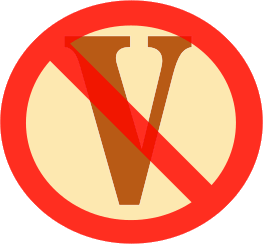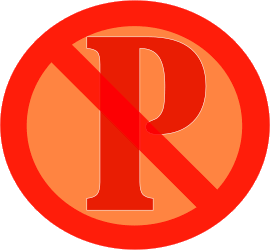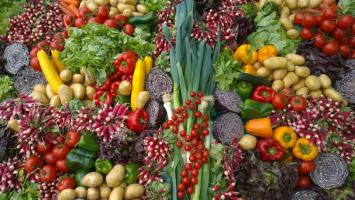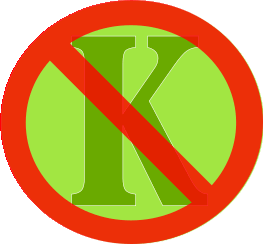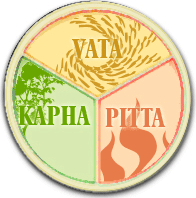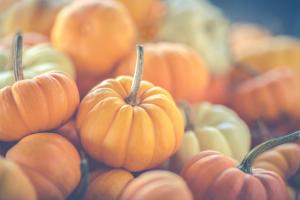LIVER GALLBLADDER HEALTH REMEDIES

|
The liver gallbladder is called Yakrit & Pittakosha in Ayurveda. Categories in Blood and CirculationTemperature SignsWater RegulationCirculationHeartLymph / Blood PlasmaRed Blood CellsImmune-SystemLiver & GallbladderAround EyesEyesTongue CoatingTongue Surface / CracksTongue BodyPulseOverviewThe liver detoxifies the blood, manages blood sugar and fats, clears hormones, metabolizes fats and nutrients, supplies the body with antioxidants that reduce inflammation, and performs many more functions. Fad liver cleanses abound - but very often these damage an already weakened liver. It is critical you know when to strengthen, and when to cleanse the liver. A weak or deficient liver should be strengthened. A congested liver should be cleansed. Deficient LiverThe liver and kidneys are the organs that "age" us. When your liver is deficient, your blood plasma becomes dry and loses both oiliness and sweetness. A Vata condition, your blood will be thin and lacking in fats, proteins, and sugar. Nourishment to your tendons and blood vessels is curtailed, your joints become stiff, and muscles become spasmodic and numb. A deficient liver can aggravate anxiety & worry. Liver deficiency can also create shakiness and erratic emotions. Most nutrients pass through your body without being assimilated if the liver is weak. In this case your liver should be restored and nourished.Liver Deficiency in strongest in Autumn. The most likely time of liver deficiency is August through September. Foods to nourish and restore the liver are
Congested LiverWhen your blood plasma is too rich with sugars, fats, or proteins, your blood becomes thick and the lymphatic system congested. Due to the thickness and richness of blood, your liver and gallbladder (Pittakosha) become congested, a Kapha condition. A congested liver leaves you feeling sluggish, the muscles flabby and lacking in tone, and causes weight gain. Liver congestion creates suppression of emotions.Liver congestion is most likely in the spring. In early spring the body begins to release winter fat into the blood. The enriched blood becomes thick, causing stagnation and congestion of the liver & gallbladder. Gallbladder attacks are more common in early spring so favor cholagogues at that time in your diet to flush out bile sludge. You may experience waves of bitterness, discouragement and a sense of failure in February. Try not to take these 'liver emotions' too seriously. Instead, these emotions offer an important cue that the liver needs cleansing in February. Foods to decongest the liver include
Toxic LiverThe liver is responsible for neutralizing toxicity. With exposure to so many chemicals in the environment, we live in an age where the liver is under attack.Sources of toxicity and liver stress could be due to environmental toxins, recreational drug use, chronic infection, or fermentation of food in the digestive tract. Common hepatotoxins also include pharmaceuticals, the birth control pill, and many others. Other common toxins include:
The Liver, Inflammation & HeatLiver imbalances tend to create heat and irritability throughout the body. When imbalanced, the liver releases bile salts into the blood, which has an irritating effect on the body and nervous system. Additionally, liver imbalances cause the immune system to become over reactive and produce reactive oxygen species, leading to more inflammation. For these reasons, the liver and gallbladder are considered the home of Pitta dosha. Signs of Pitta aggravation are often the first symptoms of liver imbalance.When the gallbladder cannot release bile properly, the stools will be light colored or gray. The complete obstruction of bile is a life threatening condition. Chronic inflammation (hepatitis) of the liver leads to fibrotic changes that cause loss of function, liver degeneration& cirrhosis, and ultimately death. All causes of liver inflammation should be taken seriously. Food, Lifestyle, and Herbs that Cool the Liver
Liver & EmotionsWhen balanced, the liver regulates the graceful flow of blood physically and emotions mentally. The liver is the most emotionally sensitive organ and its weakness is often connected to emotional instability. The liver, when disturbed, is emotionally reactive and sensitive. It is a proud organ and easily insulted by intensity and imperfection. Pitta drive & discipline often aggravates and exhausts the liver, with the result that Pitta is Ayurveda's most volatile dosha. Pleasant, soothing remedies help calm a distrustful, paranoid liver.Liver and BloodIn Ayurveda, the liver is said to generate the red part of the blood (rakta dhatu). Yet, western medicine says blood is made in the bone marrow. How can these differences be resolved? Bile components are produced in the liver from broken down red blood cells (a mala or waste product of blood). Some of these bile components are released into the blood, which "heats" up the blood as bile components are generally a bit irritating. When excess, these bile components can also cause some yellow discoloration of the skin, eyes, and teeth, a condition called choleric heat in Greek medicine. This 'heat' can be said to active the blood, and even blood production. Thus, the liver creates rakta.In this process, the liver and spleen have a functional relationship. The spleen is said to store red blood cells, and can be compared metaphorically to a "sack of rubies." The liver, on the other hand, regulates blood sugar and sugar storage, and can be compared to a "sack of potatoes." This is why the liver gets fatty when the diet is rich. To recap, the liver creates heat in blood plasma (rasa) which is yellow in color. This heat stimulates rakta, which is red in color. The spleen is pure rakta. The function of rakta is to supply oxygen to all the cells, which keeps metabolism strong, as a fire burning brightly. ConclusionThe liver is called the liver because it is essential for living. Your ability to assess and maintain liver health is essential to your well-being.Herbal Actions Affecting Liver Gallbladder
Don't know your body type? Take our free Dosha quiz!
TAKE THE QUIZ
38 likes  SAVE SYMPTOM SAVE SYMPTOMVolatile or unstable emotions are a sign of a blood imbalance and a distressed liver. Vata people may be distracted by the moment, and and susceptible to quick mood changes. Pitta people are highly sensitive, and may have strong reactions when slighted. 98 likes  SAVE SYMPTOM SAVE SYMPTOMAnger, irritability, ambition, and analytical thinking are physical as well as mental. The liver, when overburdened, creates internal heat in the body. This heat predisposes one to a fiery and analytical nature. Frustration is linked with a congested... 52 likes  SAVE SYMPTOM SAVE SYMPTOMNormally, you cannot feel your liver. However, when the liver is inflamed, you may notice soreness in the area. A liver abcess, such as Amebic liver abcess, can cause dull pain on right side of the body just above the abdomen and behind the right rib... 40 likes  SAVE SYMPTOM SAVE SYMPTOMThe body releases toxins through the digestion, urine, skin & lungs. Rashes may result when there are too many toxins, or the liver becomes otherwise aggravated. Some rashes may be infectious and require a visit to a medical doctor. All rashes are... 22 likes  SAVE SYMPTOM SAVE SYMPTOMYellowish skin can be a sign of liver distress and excess bilirubin in the blood. This may come from Vata deficiency, or an infectious process (Pitta). If the skin becomes very yellow, it is a sign of jaundice and should be treated immediately. 26 likes  SAVE SYMPTOM SAVE SYMPTOMA yellow tongue indicates the liver is overwhelmed and excess bilirubin in the blood. It is often a sign of inflammation or infection somewhere in the body. 8 likes  SAVE SYMPTOM SAVE SYMPTOMOrangish skin is skin that appears orange in color. This is a condition known as cartenosis. It may be mistaken for jaundice, which is a yellow... 25 likes  SAVE SYMPTOM SAVE SYMPTOMHepatitis is a condition of liver inflammation. There are many types of hepatitis. Hepatitis may be viral, bacterial, fungal, due to parasites, or due to excessive alcohol or pharmaceuticals, drugs, and poisons. Typical symptoms include nausea and...      (1.00 out of 5 stars) 1 rating, 34 likes (1.00 out of 5 stars) 1 rating, 34 likes SAVE SYMPTOM SAVE SYMPTOMThe spleen has two main functions in the body. The first is to filter the blood by removing microbes as well as dead or damaged red blood cells. The spleen also produces white blood cells for the immune system. Ayurveda considers the spleen (along with... 50 likes  SAVE SYMPTOM SAVE SYMPTOMFatty Liver is a condition characterized by a buildup of fat (triglycerides) in the 15 likes  SAVE SYMPTOM SAVE SYMPTOMChronic inflammation (hepatitis) of the liver leads to fibrotic changes that cause loss of function and ultimately death. The liver is adept at regeneration. Even if half the liver is removed, it will grow back. Once cirrhotic, however, the liver... 29 likes  SAVE SYMPTOM SAVE SYMPTOMAlcohol sensitivity could indicate liver weakness. Liver is weakened by the presence of chronic toxicity due to stress, intense emotions, infection, gas, or bloating.      (4.00 out of 5 stars) 1 rating, 59 likes (4.00 out of 5 stars) 1 rating, 59 likes SAVE SYMPTOM SAVE SYMPTOMIntroduction Do people think of you as being hypersensitive and reactive - to food, chemicals, emotions, or situations that don't go your way? Food and chemical sensitivity can impact your life satisfaction in many difficult ways.... 84 likes  SAVE SYMPTOM SAVE SYMPTOMGallbladder inflammation may imply presence of sludge, a gall stone, cancer or obstruction of the biliary ducts, among other conditions. 44 likes  SAVE SYMPTOM SAVE SYMPTOMSensitivity to bright lights, especially at night, indicates a Pitta disorder in the liver with Pitta toxins. These toxins tend to dilate blood vessels and the pupil of the eye. Could also be a deficiency in Riboflavin. 
AYURVEDIC FACE ASSESSMENT
Learn how to assess constitution by a person's face.
|
Join Joyful Belly.
Want our top Ayurvedic recipes and health tips?Subscribe to our free newsletter!

